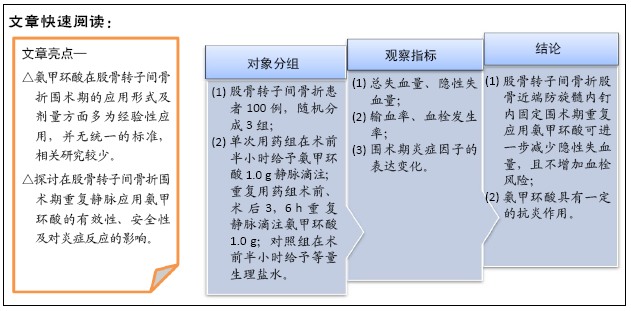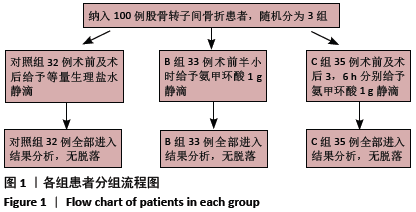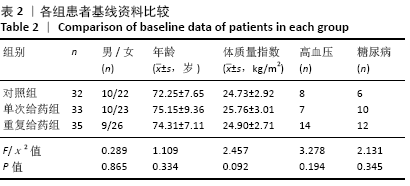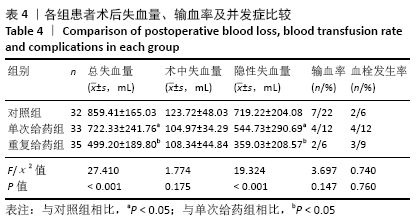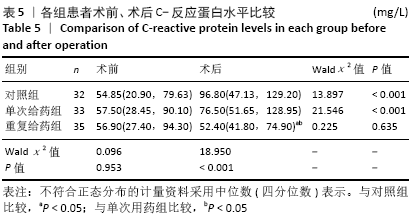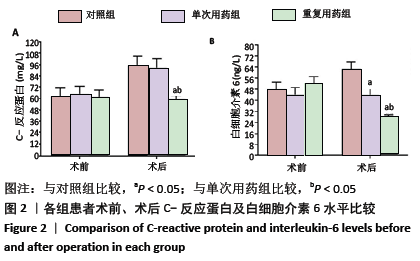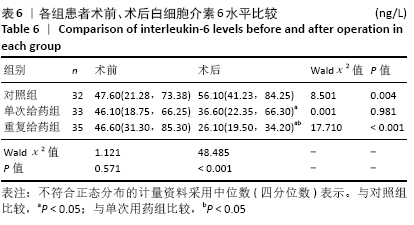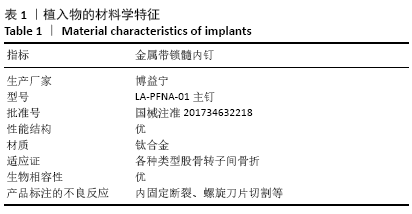[1] YOON BH, LEE YK, KIM SC, et al. Epidemiology of proximal femoral fractures in South Korea. Arch Osteoporos. 2013;8:157.
[2] 居家宝,张培训.髋部骨折流行病学特点:单中心1397例分析[J]. 实用骨科杂志,2019,25(7):592-595.
[3] YU W, ZHANG X, WU R, et al. The visible and hidden blood loss of Asia proximal femoral nail anti-rotation and dynamic hip screw in the treatment of intertrochanteric fractures of elderly high- risk patients: a retrospective comparative study with a minimum 3 years of follow-up. BMC Musculoskelet Disord. 2016;17:269.
[4] FOSS N, KEHLET H. Hidden blood loss after surgery for hip fracture. J Bone Joint Surg Br. 2006;88(8):1053-1059.
[5] MAGILL P, CUNNINGHAM EL, HILL JC, et al. Identifying the period of greatest blood loss after lower limb arthroplasty. Arthroplast Today. 2018;4(4):499-504.
[6] 中国康复技术转化及发展促进会, 中国研究型医院学会关节外科学专业委员会, 中国医疗保健国际交流促进会关节疾病防治分会, 等. 中国骨科手术加速康复围手术期氨甲环酸与抗凝血药应用的专家共识[J]. 中华骨与关节外科杂志,2019,12(2):81-88.
[7] 王军, 高明, 危杰, 等. 老年髋部骨折围手术期隐性失血量的相关影响因素分析[J]. 中华创伤骨科杂志,2015,17(2):143-146.
[8] ZHOU XD, ZHANG Y, JIANG LF, et al. Efficacy and Safety of Tranexamic Acid in Intertrochanteric Fractures: A Single-Blind Randomized Controlled Trial. Orthop Surg. 2019;11(4):635-642.
[9] 曾晶山, 蔡贤华, 李稳, 等. 老年股骨转子间骨折围手术期隐性失血量与性别、内固定方式的相关性分析[J]. 中华创伤骨科杂志,2015,17(2):134-137.
[10] 龙秋平, 廖前德, 尹科, 等. 股骨转子间骨折两种置入内固定的隐性失血比较[J]. 中国组织工程研究,2013,17(30):5460-5465.
[11] ARSHI A, LAI WC, IGLESIAS BC, et al. Blood transfusion rates and predictors following geriatric hip fracture surgery. Hip Int. 2020:1120700019897878.
[12] CLEVENGER B, MALLETT SV, KLEIN AA, et al. Patient blood management to reduce surgical risk. Br J Surg. 2015;102(11):1325-1337;discussion 1324.
[13] GAYET-AGERON A, PRIETO-MERINO D, KER K, et al. Effect of treatment delay on the effectiveness and safety of antifibrinolytics in acute severe haemorrhage: a meta-analysis of individual patient-level data from 40 138 bleeding patients. Lancet. 2018;391(10116):125-132.
[14] POERAN J, RASUL R, SUZUKI S, et al. Tranexamic acid use and postoperative outcomes in patients undergoing total hip or knee arthroplasty in the United States: retrospective analysis of effectiveness and safety. BMJ. 2014;349:g4829.
[15] 胡定, 罗刚, 倪卫东. 术后静脉滴注氨甲环酸对股骨近端防旋髓内钉治疗老年股骨转子间骨折围术期失血量的影响[J]. 中华创伤杂志,2018,34(5):410-414.
[16] HEYNS M, KNIGHT P, STEVE AK, et al. A Single Preoperative Dose of Tranexamic Acid Reduces Perioperative Blood Loss: A Meta-analysis. Ann Surg. 2020. doi: 10.1097/SLA.0000000000003793.
[17] ANDERSSON L, ERIKSSON O, HEDLUND P, et al. Special considerations with regard to the dosage of tranexamic acid in patients with chronic renal diseases. Urol Res. 1978;6(2):83-88.
[18] BLANIE A, BELLAMY L, RHAYEM Y, et al. Duration of postoperative fibrinolysis after total hip or knee replacement: a laboratory follow-up study. Thromb Res. 2013;131(1):e6-e11.
[19] ROBINSON CM, DOBSON RJ. Anterior instability of the shoulder after trauma. J Bone Joint Surg Br. 2004;86(4):469-479.
[20] XIE J, MA J, YAO H, et al. Multiple Boluses of Intravenous Tranexamic Acid to Reduce Hidden Blood Loss After Primary Total Knee Arthroplasty Without Tourniquet: A Randomized Clinical Trial. J Arthroplasty. 2016;31(11):2458-2464.
[21] XIE J, HU Q, MA J, et al. Multiple boluses of intravenous tranexamic acid to reduce hidden blood loss and the inflammatory response following enhanced-recovery primary total hip arthroplasty: a randomised clinical trial. Bone Joint J. 2017;(11):1442-1449.
[22] WU XD, CHEN Y, TIAN M, et al. Application of thrombelastography (TEG) for safety evaluation of tranexamic acid in primary total joint arthroplasty. J Orthop Surg Res. 2019;14(1):214.
[23] JOHNSTON LR, RODRIGUEZ CJ, ELSTER EA, et al. Evaluation of Military Use of Tranexamic Acid and Associated Thromboembolic Events. JAMA Surg. 2018; 153(2):169-175.
[24] 中国加速康复外科专家组. 中国加速康复外科围手术期管理专家共识(2016)[J]. 中华外科杂志,2016,54(6):413-418.
[25] BIESMA D, VAN DE WIEL A, BEGUIN Y, et al. Post-operative erythropoiesis is limited by the inflammatory effect of surgery on iron metabolism. Eur J Clin Invest. 1995;25(6):383-389.
[26] JIMÉNEZ J, IRIBARREN J, BROUARD M, et al. Safety and effectiveness of two treatment regimes with tranexamic acid to minimize inflammatory response in elective cardiopulmonary bypass patients: a randomized double-blind, dose-dependent, phase IV clinical trial. J Cardiothorac Surg. 2011;6:138.
[27] SCHULIGA M. The inflammatory actions of coagulant and fibrinolytic proteases in disease. Mediators Inflamm. 2015;2015:437695. |
